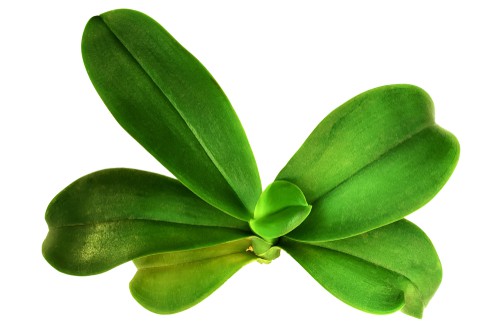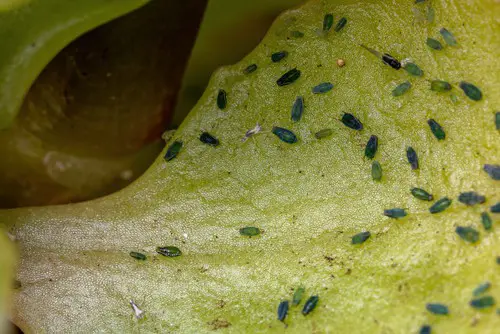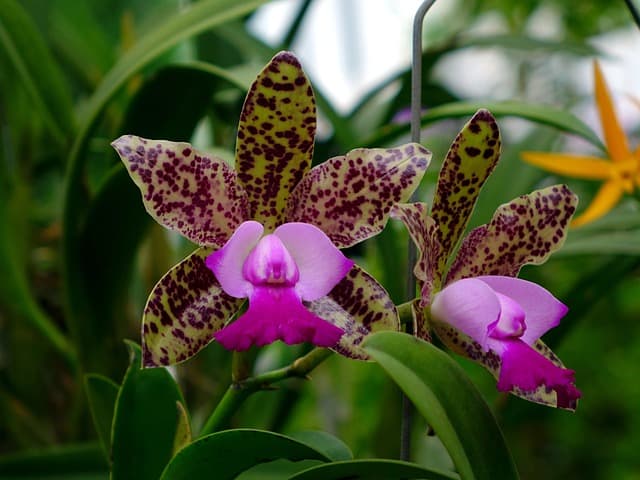Brown spots on orchid leaves can be a common problem for orchid growers. These spots can be caused by a variety of factors, including bacterial or fungal infections, pests, or environmental factors.
If left untreated, brown spots can spread to other parts of the plant and cause significant damage. However, with proper identification and treatment, it is possible to save your orchid and restore it to good health.
Identifying brown spots is the first step to treat brown spots on orchid leaves. These spots can range in color from light brown to dark brown or black, and may be circular or irregular in shape.
They may also be accompanied by other symptoms, such as yellowing or wilting of the leaves. Once you have identified the problem, you can begin to determine the cause and take steps to address it.
There are several different causes of brown spots on orchid leaves, including bacterial or fungal infections, pests, or environmental factors. Different types of orchids may be more susceptible to certain types of problems, so it is important to identify the specific type of orchid you are dealing with.
Once you have identified the cause of the problem, you can take steps to prevent further damage and restore your orchid to good health.
Key Takeaways
- Proper identification of brown spots on orchid leaves is crucial for effective treatment.
- Brown spots can be caused by a variety of factors, including infections, pests, and environmental factors.
- Different types of orchids may be more susceptible to certain types of problems, so it is important to identify the specific type of orchid you are dealing with.
Check out these other top posts in this category:
- How to Treat Brown Spots on Fig Leaves
- How to Treat Brown Spots on Cucumber Leaves
- How to Treat Brown Spots on Basil Leaves
Identifying Brown Spots on Orchid Leaves

Brown spots on orchid leaves can be caused by a variety of factors, including fungal and bacterial infections, pests, or environmental stressors. Identifying the cause of the brown spots is crucial in determining the appropriate treatment.
Symptoms of brown spots on orchid leaves can vary in size, shape, and color. The spots can be small or large, circular or irregularly shaped, and can range from light brown to dark brown or black. In some cases, the spots may also be accompanied by yellowing or discoloration of the surrounding tissue.
One common cause of brown spots on orchid leaves is bacterial brown spot, which is caused by the bacteria Erwinia. This infection typically starts as small water-soaked lesions that eventually turn brown and may have a yellow halo. Over time, the spots can grow and coalesce, leading to the death of the affected tissue.
Another common cause of brown spots on orchid leaves is fungal infection, such as botrytis. This type of infection typically starts as small brown or black spots that may be fuzzy or have a water-soaked appearance. The spots may also be accompanied by a foul odor.
In addition to infections, environmental stressors such as overwatering, underwatering, or exposure to extreme temperatures or direct sunlight can also cause brown spots on orchid leaves. In these cases, the brown spots may be irregularly shaped and may appear on multiple leaves.
Brown Spots on Orchid Leaves – 5 Common Problems
Brown spots on orchid leaves can be caused by a variety of factors. Understanding the causes of brown spots is crucial in determining the appropriate treatment for your orchids. Here are some of the most common causes of brown spots on orchid leaves:
1. Bacterial Infection
Bacterial brown spot is a common disease that affects orchids. This disease is caused by bacteria that infect the plant tissue and cause brown spots on the leaves. The bacteria can spread quickly and cause the leaves to rot, so it’s important to treat the infection as soon as possible.
2. Fungal Infection
Fungal diseases are another common cause of brown spots on orchid leaves. Fungal spores can infect the plant tissue and cause lesions or black spots on the leaves. Botrytis is a fungal disease that likes cool, damp weather with increasing humidity and can cause brown spots on the leaves.
3. Watering Issues

Overwatering or underwatering your orchids can also cause brown spots on the leaves. When orchids are overwatered, the roots can become waterlogged, which can lead to root rot and brown spots on the leaves. Underwatering can cause the leaves to become thin and dry, which can also lead to brown spots.
4. Environmental Conditions
High humidity, low light, and extreme temperatures can stress orchids and cause brown spots on the leaves. Direct sunlight can cause sunburn and brown spots on the leaves, while low light can cause the leaves to turn yellow and develop brown spots.
5. Pests
Pests such as mealybugs and ants can also cause brown spots on orchid leaves. Mealybugs feed on the sap of the leaves and can cause yellow halo spots on the leaves. Ants can carry fungal spores that can infect the plant tissue and cause brown spots on the leaves.
Types of Orchids Affected
Brown spots on orchid leaves can affect various types of orchids, including Phalaenopsis, Cattleya, Dendrobiums, Cymbidium, and Oncidium.
Phalaenopsis orchids, also known as moth orchids, are the most commonly kept orchids in homes and are susceptible to brown spots due to their popularity and sensitivity to environmental changes.
Cattleyas are another popular type of orchid that can develop brown spots on their leaves. These orchids are known for their vibrant and colorful blooms and are often used in corsages and arrangements.
Dendrobiums are a diverse group of orchids that can vary in size, shape, and color. They are typically found in tropical regions and are known for their delicate and intricate blooms.
Cymbidium orchids are a popular choice for gardeners due to their hardiness and ability to grow in a variety of conditions. These orchids can develop brown spots on their leaves due to various factors, including overwatering, low humidity, and pest infestations.
Oncidiums, also known as dancing lady orchids, are a diverse group of orchids that can vary in size and shape. They are known for their vibrant and colorful blooms and are popular among collectors.
Prevention and Treatment Methods

Preventing brown spots on orchid leaves is the best way to ensure healthy plants. Here are some prevention methods:
- Sanitation: Keeping the growing area clean and free of debris can help prevent the spread of disease. Remove any dead leaves or plant material from the area and sterilize any tools used to prune or repot orchids.
- Air circulation: Good air circulation can help prevent the growth of fungi and bacteria. Make sure the growing area has good ventilation and avoid overcrowding plants.
- Isolate infected plants: If you notice any signs of bacterial rot or fungal infection, isolate the plant immediately to prevent the spread of the disease to other plants.
- Healthy tissue: Keeping the orchid healthy can help prevent brown spots from forming. Make sure the plant is getting enough light, water, and nutrients. Avoid overwatering and make sure the roots are healthy.
If brown spots do appear on orchid leaves, there are several treatments that can help:
- Fungicide: If the brown spots are caused by a fungal infection, a fungicide can be used to treat the plant. Make sure to follow the instructions carefully and apply the fungicide to the affected areas.
- Root treatment: If the roots are affected, treating them with a fungicide or bactericide can help. Remove any slimy or rotten roots and apply the treatment to the healthy roots.
- Repotting: If the orchid is severely infected, repotting it in fresh, sterile soil can help. Make sure to remove any infected roots and treat the remaining healthy roots before repotting.
- Pruning: If the brown spots are on the leaves only, pruning the affected leaves can help. Make sure to use sterile tools and cut the leaf back to healthy tissue.
- High temperatures: If the brown spots are caused by high temperatures, move the plant to a cooler location and make sure it is not in direct sunlight.
- Press thick leaves: If the leaves are thick, pressing them can help prevent the growth of bacteria and fungi. Gently press the leaves between two sheets of paper to remove any excess moisture.
- Bacterial rot: If the brown spots are caused by bacterial rot, remove any affected tissue and treat the plant with a bactericide. Make sure to follow the instructions carefully and apply the treatment to the affected areas.
- Treatment of flowers: If the flowers are affected, remove them immediately to prevent the spread of disease.
Dealing with Pests and Infestations

Orchids are susceptible to a variety of pests and infestations, which can cause brown spots on their leaves. These pests include ants, aphids, spider mites, mealybugs, and scale insects.
Ants are attracted to the sweet nectar produced by orchids and can cause damage to the plant by tunneling through the potting mix and disturbing the roots. To prevent ants from infesting the plant, place a layer of diatomaceous earth on top of the potting mix.
Spider mites are tiny insects that can cause damage to the leaves of orchids by sucking the sap out of the plant. To prevent infestations, keep the humidity level high and mist the plant regularly. If an infestation occurs, treat the plant with a miticide.
Mealybugs are another common pest that can cause brown spots on the leaves of orchids. They are small, white, fluffy insects that can be found on the undersides of leaves. To prevent infestations, inspect the plant regularly and remove any mealybugs by wiping them off with a cotton swab dipped in rubbing alcohol.
Scale insects are another common pest that can cause brown spots on the leaves of orchids. They are small, flat, oval insects that can be found on the undersides of leaves and stems. To prevent infestations, inspect the plant regularly and remove any scale insects by wiping them off with a cotton swab dipped in rubbing alcohol.
Aphids are small, soft-bodied insects that can be found on the undersides of leaves. They can cause damage to the plant by sucking the sap out of the leaves. To prevent infestations, inspect the plant regularly and remove any aphids by wiping them off with a cotton swab dipped in rubbing alcohol.
Conclusion
Treating brown spots on orchid leaves requires a combination of preventative measures and treatment options.
By managing humidity levels, increasing airflow, regulating temperature, watering the roots instead of the leaves, sterilizing gardening tools regularly, and inspecting orchids for signs of infection, growers can prevent brown spots from developing on their orchid leaves.
If brown spots do appear, growers can use a variety of treatment options depending on the cause of the spots. For bacterial infections, removing infected leaves and using a copper-based fungicide can help prevent the spread of the infection.
For fungal infections, using a fungicide that contains either copper or sulfur can be effective. If the spots are caused by pests such as spider mites or scale insects, using an insecticidal soap or neem oil can help kill the pests.
It is important to note that when using any treatment option, it is essential to follow the manufacturer’s instructions carefully to avoid damaging the orchid. Additionally, growers should always isolate infected orchids from healthy ones to prevent the spread of disease.
Frequently Asked Questions

How can I prevent brown spots from appearing on my orchid leaves?
Preventing brown spots on orchid leaves involves maintaining a healthy growing environment for your orchids. This includes providing adequate airflow, regulating the temperature, and watering the roots instead of the leaves.
It is also important to sterilize your gardening tools and supplies regularly and to inspect your orchids for any signs of disease or pests.
What are some natural remedies for treating brown spots on orchid leaves?
Some natural remedies for treating brown spots on orchid leaves include using a mixture of water and neem oil or a solution of hydrogen peroxide and water. It is important to test any new solution on a small area of the orchid to ensure that it does not cause damage.
Are there any specific fungicides or pesticides that are effective in treating brown spots on orchid leaves?
There are several fungicides and pesticides that can be effective in treating brown spots on orchid leaves, including copper-based fungicides and insecticidal soaps. It is important to carefully read and follow the instructions on the product label to ensure effective and safe use.
What are the common causes of brown spots on orchid leaves?
Brown spots on orchid leaves can be caused by several factors, including bacterial or fungal infections, insect infestations, sunburn, and overwatering. It is important to identify the cause of the brown spots before treating them to ensure that the treatment is effective.
Can overwatering cause brown spots on orchid leaves?
Yes, overwatering can cause brown spots on orchid leaves. When orchids are overwatered, the roots can become waterlogged and begin to rot, which can lead to brown spots on the leaves.
It is important to allow the soil to dry out between waterings and to ensure that the orchid is not sitting in standing water.
What is the best way to remove brown spots from orchid leaves?
The best way to remove brown spots from orchid leaves is to use a sterilized cutting tool to remove the affected area. It is important to avoid spreading the infection to other parts of the orchid or to other plants.
After removing the affected area, it is important to monitor the orchid for any signs of further infection.

Hey, I’m Lisa and I’ve been an avid gardener for over 30 years. I love writing, talking and living in the garden! Feel free to connect with me on my socials below


